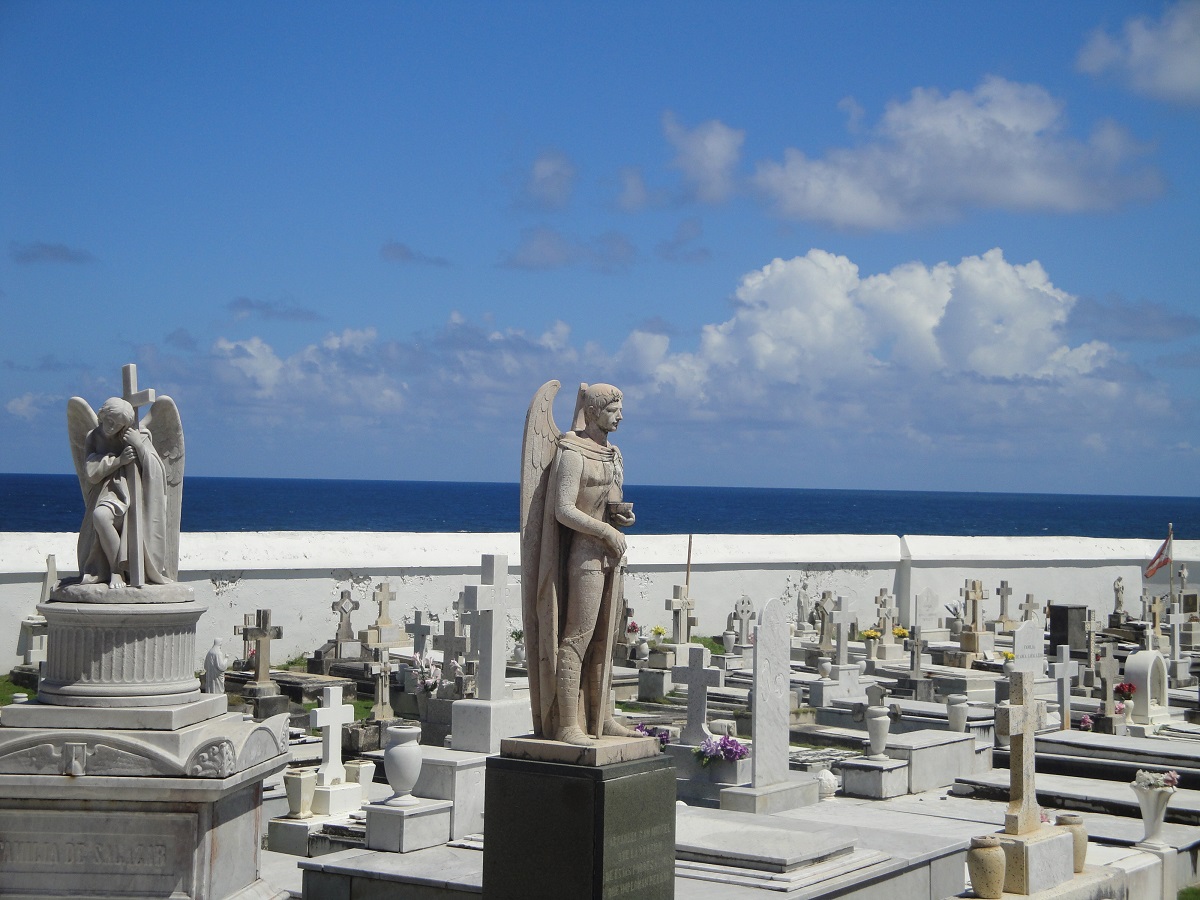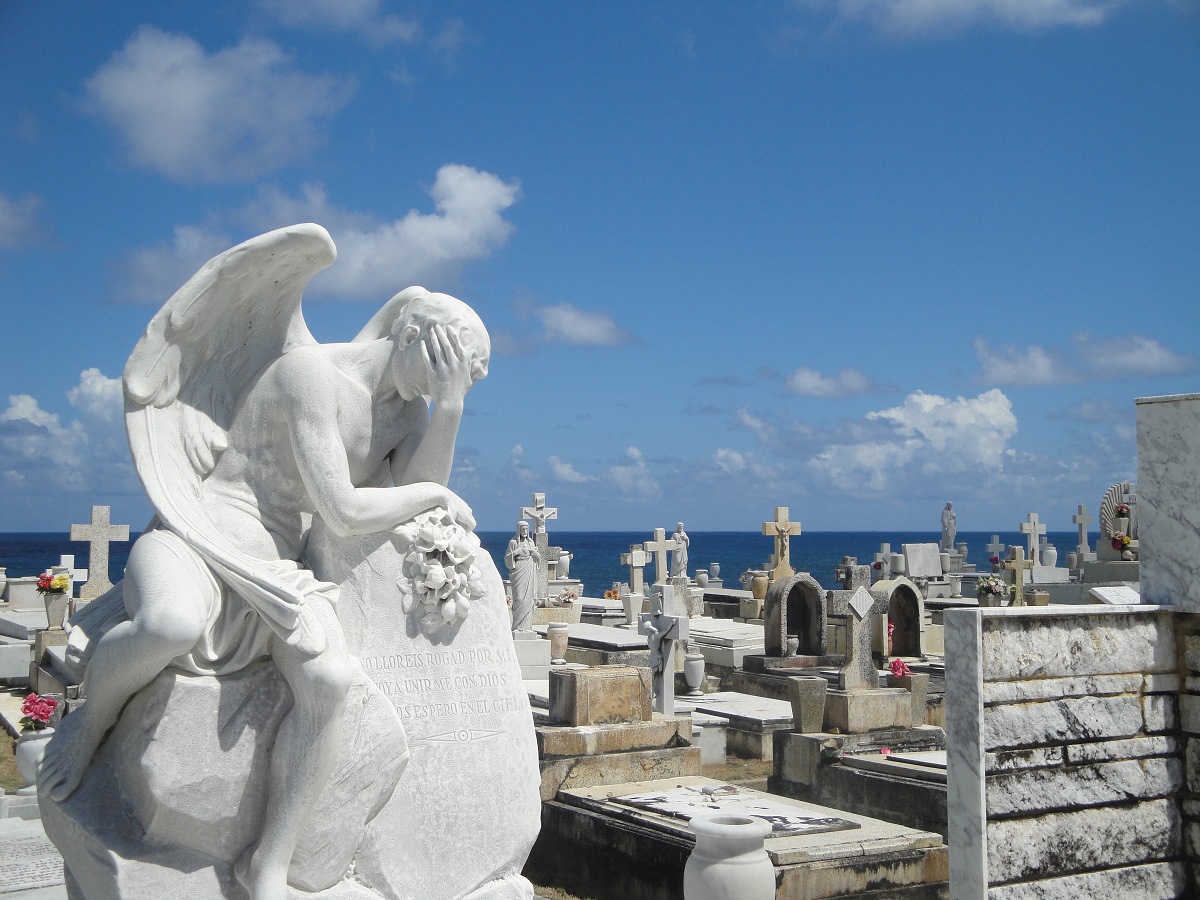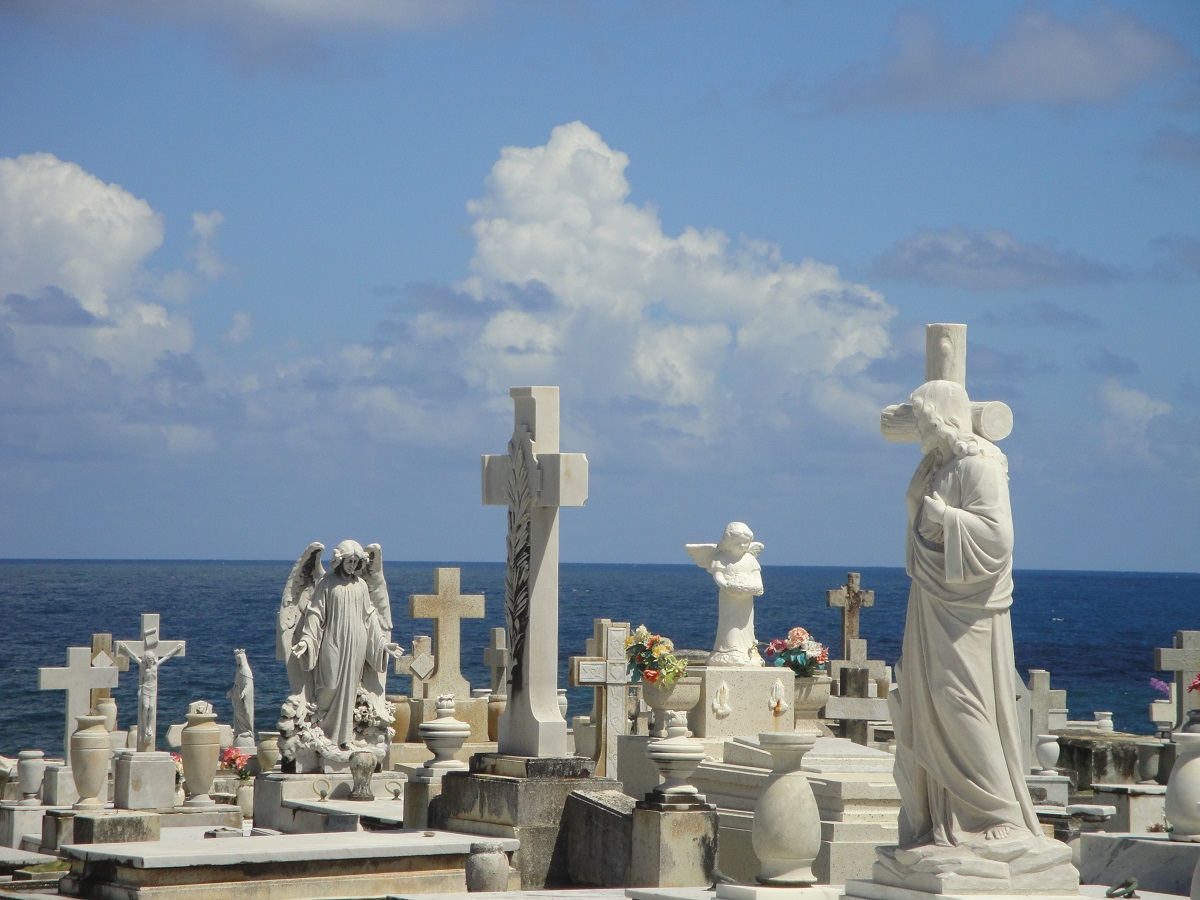When I die, I don’t want to rest in peace
I want to dance in joy
I want to dance in the graveyards
–Delta Rae, “Dance in the Graveyards”
Greetings fellow taphophiles! And welcome to October! The month we can openly indulge our obsession without incessant judgy chatter by people who are unlikely readers of The Wild Hunt.
While many of us are still waiting for the air to turn crisp on this side of the planet, and some of us closer to the tropics will be waiting even longer, my thoughts, as usual, turn to cemeteries. This happens in April, June, and January; pretty much year-round. But with Samhain looming closer, October steals the show. And I admit, all the Halloween adornments – from tacky to sober – help.
Cemeteries are always and unashamedly on my list of places to visit when I travel. So much so, that we’ve planned trips around visits to them. So, begging your indulgence, and because ‘tis the season or close to it, here are my top five cemeteries and memorial gardens for 2019.
I should first define the inclusion criteria. The location must be a place where the remains of dead humans are buried or somehow interred. They must allow visitors and be under contemporary management. And they must be active in their purpose. That is, you can be buried there if you so desire; and by that, I mean legally, not a cremate sprinkle midnight run on Salisbury Plain.
That excludes famous burial sites like the Great Pyramid, Stonehenge and the nearby mounds, and the outstanding Etruscan Necropolis at Cerveteri. We’ll cover some of these in the future.
Before I hear a flood of ancestral complaints, “Why not….” and “what about….,” and “What’s wrong with you? You forgot… ,“ let me add one last criterion that may disappoint readers outside North America: “road-tripability,” that is you can get in a car or perhaps a short flight and then a car, and get to the cemetery. You could even arrive in a hearse (for added effect, not the other way).
So, first, let me start with an honorable mention, violating that last criterion. Hands-down one of my favorite burial grounds in the world.
Cimitero Acattolico, the Protestant Cemetery of Rome.
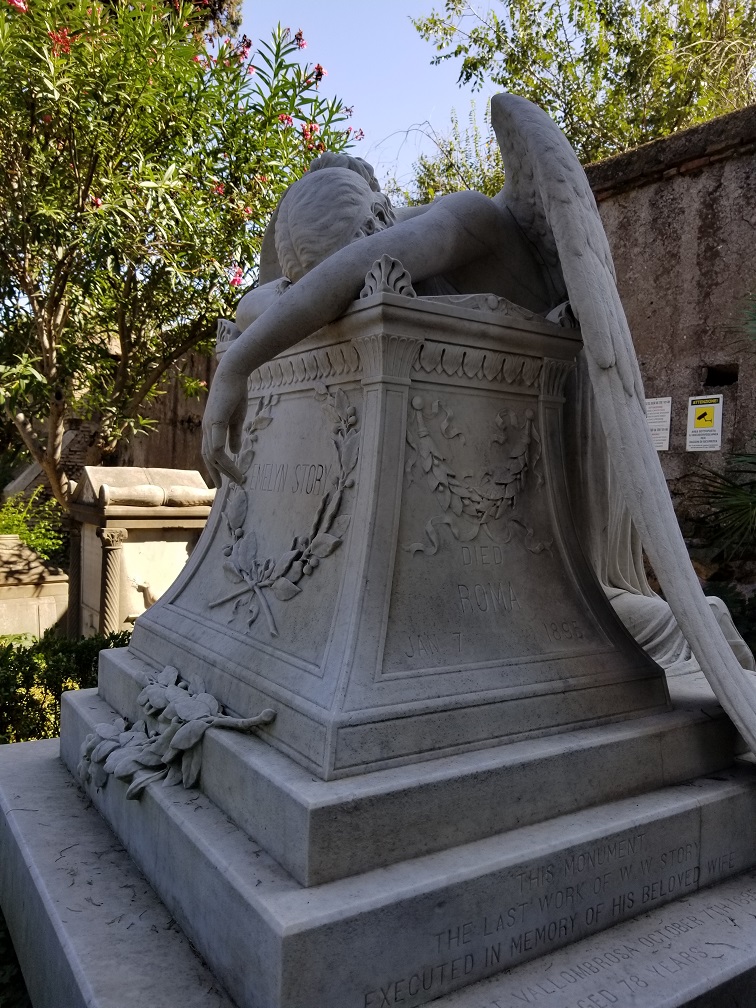
The Weeping Angel at the Protestant Cemetery in Rome. [Photo Credit: M. Tejeda-Moreno]
Rome has no scarcity of active necropoles. The Eternal City has been collecting its residents for almost three millennia and the area far longer as one of the oldest continuously occupied sites in Europe.
As a garden, the cemetery is a respite from the bustle of Rome. Tucked away behind the Pyramid of Cestius and incorporated into the Aurelian Walls of the Testaccio district, it is covered in stunningly adorned burial sites and surrounded by Mediterranean cypresses and pomegranates. It is the final resting place of English poets John Keats and Percy Bysshe Shelley; two of its famous literary residents but others include American abolitionist, women’s suffrage advocate and agent of the American Anti-Slavery Society, Dr. Sarah Parker Remond.
Your escorts in this cemetery are cats that have made the cemetery home. They have become so accustomed to visitors that they accompany you on your tour of the grounds.
Onto the TWH Taphophiles American Top 5 North American tour for 2019:
5. Bonaventure, Savannah, GA
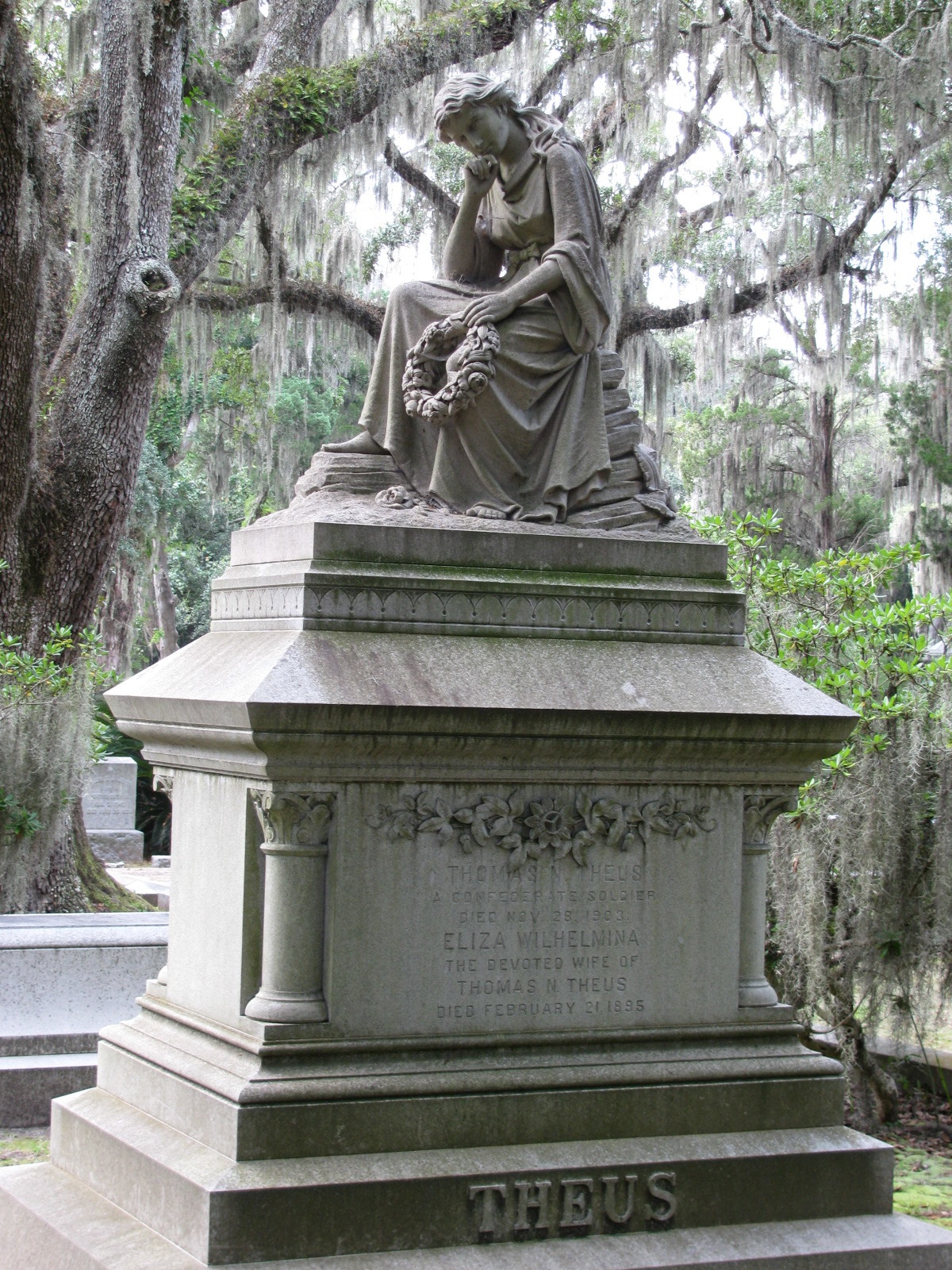
Bonaventure Cemetery [Photo Credit: Slowking4/ CC BY-SA 3.0]
Located on an overlook of the Wilmington River just east of midtown Savannah, the cemetery became even more famous in the 1990s when it was featured in John Berendt’s novel Midnight in the Garden of Good and Evil and the subsequent film.
Originally the site of a plantation, the land became a cemetery in 1868 and the city purchased it in 1907. Environmentalist and “Father of the National Parks”, John Muir stayed in Bonaventure cemetery during his walk to Florida and the Gulf which inspired his book A Thousand-Mile Walk to the Gulf and a chapter within it titled “Camping among the Tombs”. Muir wrote:
The most conspicuous glory of Bonaventure is its noble avenue of live-oaks. They are the most magnificent planted trees I have ever seen, about fifty feet high and perhaps three or four feet in diameter, with broad spreading leafy heads. The main branches reach out horizontally until they come together over the driveway, embowering it throughout its entire length, while each branch is adorned like a garden with ferns, flowers, grasses, and dwarf palmettos.
But of all the plants of these curious tree-gardens, the most striking and characteristic is the so-called Long Moss. It drapes all the branches from top to bottom, hanging in long silvery-gray skeins, reaching a length of not less than eight or ten feet, and when slowly waving in the wind they produce a solemn funereal effect singularly impressive.
The cemetery remains the same: covered with majestic oaks that flowing Spanish moss. It is quintessential Southern Gothic.
One note: the famous statute, Bird Girl by Sylvia Shaw Judson, featured in Midnight in the Garden of Good and Evil has been re-located to the Telfair Museum in Savannah.
4. Green-Wood, Brooklyn, New York

Gothic Revival Entrance to Green-Wood Cemetery [Photo Credit: S. Ciotti]
The Green-Wood Cemetery is a 500 -acre memorial garden and national historic landmark within the metropolis of New York City. It consists of 19th and 20th-century statuary and mausoleums as well as knolls, dales, glacial ponds, and secluded paths. It is a multi-purpose paradise intersecting the interests of taphophiles, gardeners, bird-watchers, history buffs, and architecture aficionados. For a time, it was the second-most-popular tourist destination in the state after Niagara Falls.
The entrance to the cemetery consists of stunning Gothic revival spires by architect Richard M. Upjohn, co-founder, and president of the American Institute of Architects. Green-Wood hosts 600,000 graves of ancestors and has a collection of some 7,000 trees.
Among its residents are Henry Bergh, founder of the American Society for the Prevention of Cruelty to Animals and Henry Jarvis Raymond, founder of The New York Times.
The cemetery also hosts its own crematoriums and an amazing columbarium.
3. St. Louis Cemetery, New Orleans
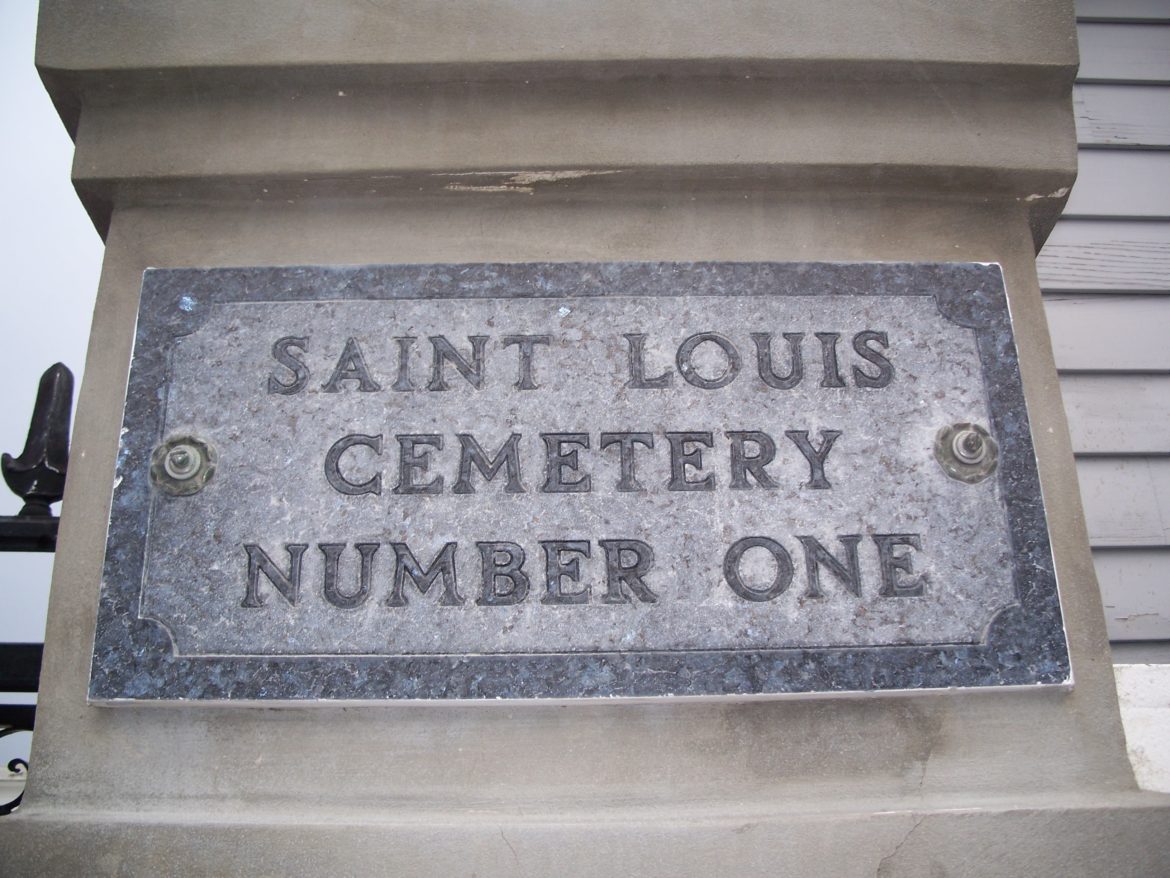
St. Louis Cemetery No. 1 [Photo Credit: Vrlobo888/ Public Domain]
This is a cemetery that, when omitted, leaves one to question the veracity of any list of American cemeteries worthy of a road trip. Hosted by the immanently magical city of New Orleans. The cemetery is a complex of three separate cemeteries. Cemeteries No. 1 and No. 2 are included on the National Register of Historic Places and the Louisiana African American Heritage Trail. Cemetery 3, the largest of the complex, is somewhat disconnected from the others, further inland near City Park. The cemeteries are Roman Catholic and have been in continuous use since their founding in 1789.
The cemeteries consist of above-ground vaults common in Europe and the Caribbean. The cemeteries, particularly No1 and No 2, consists of a maze of vaults that are captivating in style and standing apart from other cemeteries in North America that now consist predominantly of cenotaphs. They are a delight to wander while being attentive that these are active-use sites where burials and other ceremonies are common.
St. Louis Cemetery No. 1 is perhaps the most famous and believed to host the mighty ancestor, Marie Laveau, the renowned Voodoo priestess. St. Louis Cemetery No. 2 host notable musicians and host of historical figures from Louisiana’s history.
2. Neptune Memorial Reef, Miami

Neptune Memorial Reef [Photo Credit: Todd Murray CC BY-SA 2.0]
This an active and spectacular columbarium located about 4 miles off-shore and east of Miami. It consists of 600,000 square feet (about 65,000 square meters) of the ocean floor) at a depth of 40 feet. The site was created by the Neptune Society that provides underwater burials and cremations.
The Neptune Memorial Reef is now the world’s largest man-made reef, and it is far from finished. It already consists of a network of roads and statuary visible from the ocean’s surface with snorkeling gear but best visited with scuba equipment. It is listed as a diving destination and boaters are welcome, but no fishing or shellfish/lobster-taking is allowed. The site recently developed natural coral in addition to manmade statuary.
The site will eventually host 125,000 cremated remains of ancestors.
The project originally encountered a host of barriers but has now been fully permitted by the Environmental Protection Agency, the Army Corps of Engineers, the National Oceanic and Atmospheric Administration and the exceptionally restrictive and cautious Florida Fish and Wildlife Commission. The reef is now attracting the attention of marine biologists, and ecologists worldwide because of its positive effect on the ocean floor and marine life.
Perhaps the most famous ancestor at the Neptune Memorial Reef is the legendary chef Julia Child.
1. Santa María Magdalena de Pazzis Cemetery, San Juan, Puerto Rico.
While you cannot technically drive here from the North American content, it is a short flight- all within the US – and still a road trip if you are already on the island. The Santa María Magdalena de Pazzis Cemetery is located within Old San Juan, Puerto Rico overlooking the majestic Atlantic Ocean that symbolizes the spirit’s journey to the afterlife.
The cemetery is an often-overlooked side trip for visitors of Castillo San Felipe del Morro, often called Morro Castle and the historic district of San Juan. The colonial-era style cemetery is set recessed from the fortress walls along a sloping green field along the walk Calle del Morro that leads to the entrance of the castle. However, entrance to the cemetery is via a small side street that leads through a tunnel into the main gate.
The cemetery is inspiring and peaceful. As you walk through the gates the trade winds carry sea mist and you hear the constant lap of the ocean waves that crash on rocks just a few yards away from the escarpment walls. The cemetery consists of two parts: the main entrance area and a smaller section that also hosts the chapel.
The cemetery was opened in 1863 and patronized by Carmelite nuns. The burial sites are active, cleaned and maintained with flowers and other offerings to ancestors. The statuary is stunning with a sparkling ocean backdrop. The cemetery hosts ancestors from Puerto Rican history, arts, and culture.
There it is, my entirely subjective list for 2019; now on to more exploring.
Taphophiles! Do you have a favorite cemetery? Let us know! We’re all looking for new places to visit.
The Wild Hunt is not responsible for links to external content.
To join a conversation on this post:
Visit our The Wild Hunt subreddit! Point your favorite browser to https://www.reddit.com/r/The_Wild_Hunt_News/, then click “JOIN”. Make sure to click the bell, too, to be notified of new articles posted to our subreddit.
